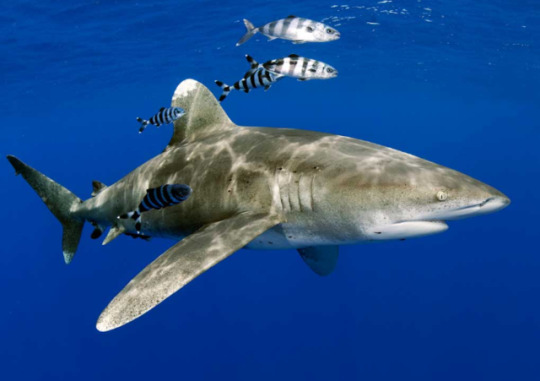Photo

2019 January 31
Sharpless 308: Star Bubble
Image Credit & Copyright: Laubing
Explanation: Blown by fast winds from a hot, massive star, this cosmic bubble is huge. Cataloged as Sharpless 2-308 it lies some 5,200 light-years away toward the constellation of the Big Dog (Canis Major) and covers slightly more of the sky than a Full Moon. That corresponds to a diameter of 60 light-years at its estimated distance. The massive star that created the bubble, a Wolf-Rayet star, is the bright one near the center of the nebula. Wolf-Rayet stars have over 20 times the mass of the Sun and are thought to be in a brief, pre-supernova phase of massive star evolution. Fast winds from this Wolf-Rayet star create the bubble-shaped nebula as they sweep up slower moving material from an earlier phase of evolution. The windblown nebula has an age of about 70,000 years. Relatively faint emission captured in the expansive image is dominated by the glow of ionized oxygen atoms mapped to a blue hue. SH2-308 is also known as The Dolphin Nebula.
∞ Source: apod.nasa.gov/apod/ap190131.html
163 notes
·
View notes
Video
youtube
Venezuela Gold: Bank of England ‘no longer neutral player’ – Richard Wolff
7 notes
·
View notes
Link
107 notes
·
View notes
Link
2 notes
·
View notes
Text
me: *deletes fucking everything off my phone*
phone: your storage is almost full
When you delete things off of a mobile device (like a phone or digital camera), the file goes to your phone’s recycle bin (just like on a desktop computer or laptop), typically an invisible folder named .trashes or .trash. There, it continues to take up the same amount of memory storage as it did before you ‘deleted’ it. To empty your mobile device’s recycling bin, plug your phone into your desktop or laptop via USB as a memory device, right click on your desktop/laptop’s recycling bin/trash, and tell it to empty your recycling bin/empty trash. Your computer will empty all .trash/.trashes folders, including the one on your phone, actually deleting the files permanently this time, freeing up your phone/camera’s memory space. Reblog to save a life.
(I know this works on MAC with my Andriod, it’s not too far a stretch to do the same on Windows and/or with other phones as well. In fact, it should be easier to do on Windows since Windows Explorer is more conducive to finding hidden folders.)
676K notes
·
View notes
Photo

Mosaic depicting Tigress and Cubs. Roman, Eastern Roman Empire, 4th century. From the Cleveland Museum of Art
863 notes
·
View notes
Photo
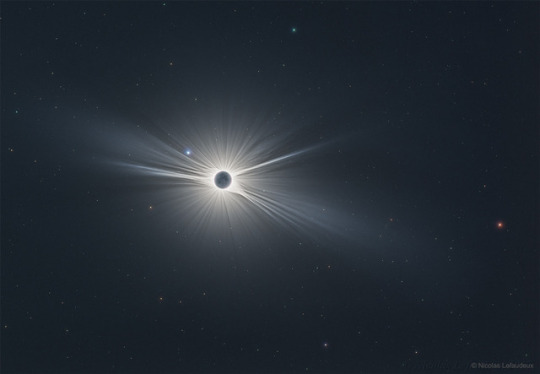
2019 January 30
Wide Field View of Great American Eclipse
Image Credit & Copyright: Nicolas Lefaudeux
Explanation: Only in the fleeting darkness of a total solar eclipse is the light of the solar corona easily visible. Normally overwhelmed by the bright solar disk, the expansive corona, the sun’s outer atmosphere, is an alluring sight. But the subtle details and extreme ranges in the corona’s brightness, although discernible to the eye, are notoriously difficult to photograph. Pictured here, however, using over 120 images and meticulous digital processing, is a detailed wide-angle image of the Sun’s corona taken during the Great American Eclipse in 2017 August. Clearly visible are intricate layers and glowing caustics of an ever changing mixture of hot gas and magnetic fields. Hundreds of stars as faint as 11th magnitude are visible behind the Moon and Sun, with Mars appearing in red on the far right. The next total eclipse of the Sun will occur on July 2 and be visible during sunset from a thin swath across Chile and Argentina.
∞ Source: apod.nasa.gov/apod/ap190130.html
141 notes
·
View notes
Photo

Trifecta. Venus, Jupiter, and Antares form a triangle above Courthouse Butte. Sedona, Az.
5K notes
·
View notes
Photo
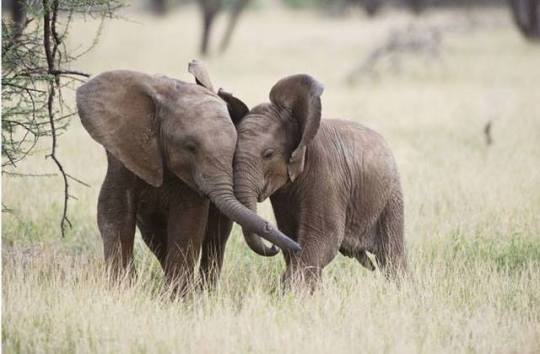
Evolution in action
The poaching of elephants for ivory is simply deplorable. Even since the banning on the trade of ivory in 1989, we’re still losing around 8% of elephants to illegal poaching- nothing we have implemented has stopped this cruelty. So, elephants have taken the matter into their own hands.
Elephants all over the world have begun selecting against having tusks. Previously, Asian male elephants were born without tusks in only around 2% of cases. By 2005, this figure had grown to between 5 and 10%. In Africa, one national park estimated the number of their elephants born without tusks was as high as 38%. What we are seeing here is natural selection in action. It is uncertain whether female elephants are choosing to breed with non-tusk bearing elephants more frequently or simply that elephants without tusks have a greater chance of reaching the age of breeding- probably a combination of both.
Keep reading
560 notes
·
View notes
Photo

Nicobar Pigeon
Caloenas nicobarica
Source: Here
440 notes
·
View notes
Photo

Cheetah Supermom with her adorable furrballs spotted by #wildographer, field guide and GM at @tangala_safari_camp @kylelewin_wildlife_photography
*
・・・
Instafollow him for regular updates, prints and enquire about safari ideas.
.
#Wildography #wildlifephotography #kylelewinwildlifephotography #africansafaris #africanamazing #wildlife4nature #animalElite #animal_captures #animals_illife #worldunion #shots_of_animals #everything_animals #featured_wildlife #animalsultans #destination_wild #wildlifeplanet #wildlifeonearth #exclusive_wildlife #wildlifeperfection #yourshotphotographer #cheetah
https://www.instagram.com/p/BtQpviXAb8A/?utm_source=ig_tumblr_share&igshid=1e55c2drhq7d8
207 notes
·
View notes
Photo


I hope he wins the lawsuit, a police officer was finally doing the right thing and they penalize him for not being a racist monster!
374K notes
·
View notes
Link
Fish are the most numerous vertebrates on Earth today, outnumbering the others 10 to one. There was, however, a time when they were much more diverse.
Image credit: @paleoart
167 notes
·
View notes
Link
The goal in listing and evaluating invasive threats is to prevent these species from ever crossing EU borders and establishing themselves.
30 notes
·
View notes
Text
Extreme Science: Launching Sounding Rockets from The Arctic
This winter, our scientists and engineers traveled to the world’s northernmost civilian town to launch rockets equipped with cutting-edge scientific instruments.
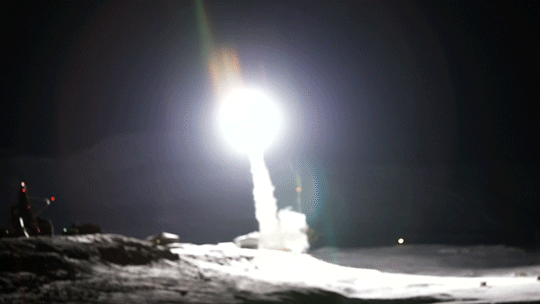
This is the beginning of a 14-month-long campaign to study a particular region of Earth’s magnetic field — which means launching near the poles. What’s it like to launch a science rocket in these extreme conditions?

Our planet is protected by a natural magnetic field that deflects most of the particles that flow out from the Sun — the solar wind — away from our atmosphere. But near the north and south poles, two oddities in Earth’s magnetic field funnel these solar particles directly into our atmosphere. These regions are the polar cusps, and it turns out they’re the ideal spot for studying how our atmosphere interacts with space.

The scientists of the Grand Challenge Initiative — Cusp are using sounding rockets to do their research. Sounding rockets are suborbital rockets that launch to a few hundred miles in altitude, spending a few minutes in space before falling back to Earth. That means sounding rockets can carry sensitive instruments above our atmosphere to study the Sun, other stars and even distant galaxies.
They also fly directly through some of the most interesting regions of Earth’s atmosphere, and that’s what scientists are taking advantage of for their Grand Challenge experiments.
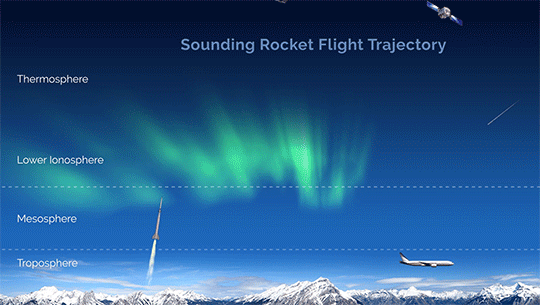
One of the ideal rocket ranges for cusp science is in Ny-Ålesund, Svalbard, off the coast of Norway and within the Arctic circle. Because of its far northward position, each morning Svalbard passes directly under Earth’s magnetic cusp.
But launching in this extreme, remote environment puts another set of challenges on the mission teams. These launches need to happen during the winter, when Svalbard experiences 24/7 darkness because of Earth’s axial tilt. The launch teams can go months without seeing the Sun.
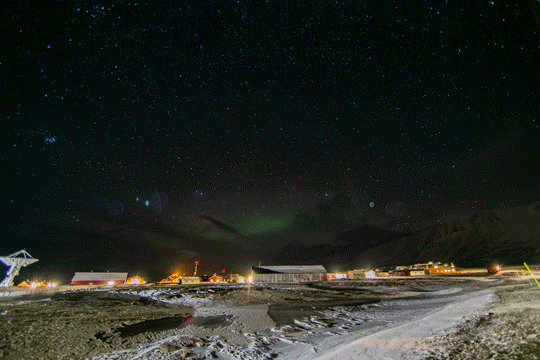
Like for all rocket launches, the science teams have to wait for the right weather conditions to launch. Because they’re studying upper atmospheric processes, some of these teams also have to wait for other science conditions, like active auroras. Auroras are created when charged particles collide with Earth’s atmosphere — often triggered by solar storms or changes in the solar wind — and they’re related to many of the upper-atmospheric processes that scientists want to study near the magnetic cusp.

But even before launch, the extreme conditions make launching rockets a tricky business — it’s so cold that the rockets must be encased in styrofoam before launch to protect them from the low temperatures and potential precipitation.

When all is finally ready, an alarm sounds throughout the town of Ny-Ålesund to alert residents to the impending launch. And then it’s up, up and away! This photo shows the launch of the twin VISIONS-2 sounding rockets on Dec. 7, 2018 from Ny-Ålesund.
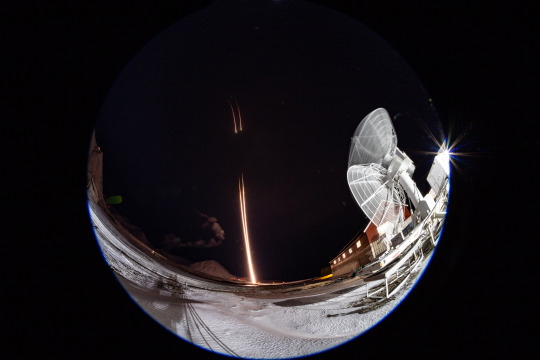
These rockets are designed to break up during flight — so after launch comes clean-up. The launch teams track where debris lands so that they can retrieve the pieces later.

The next launch of the Grand Challenge Initiative is AZURE, launching from Andøya Space Center in Norway in March 2019.
For even more about what it’s like to launch science rockets in extreme conditions, check out one scientist’s notes from the field: https://go.nasa.gov/2QzyjR4
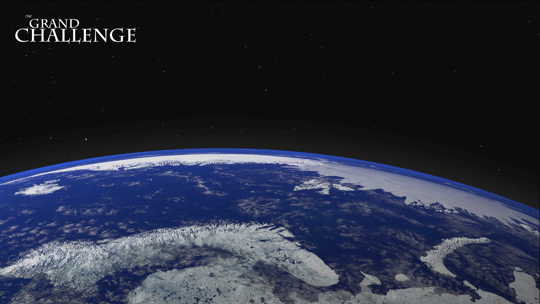
For updates on the Grand Challenge Initiative and other sounding rocket flights, visit nasa.gov/soundingrockets or follow along with NASA Wallops and NASA heliophysics on Twitter and Facebook.
@NASA_Wallops | NASA’s Wallops Flight Facility | @NASASun | NASA Sun Science
3K notes
·
View notes

